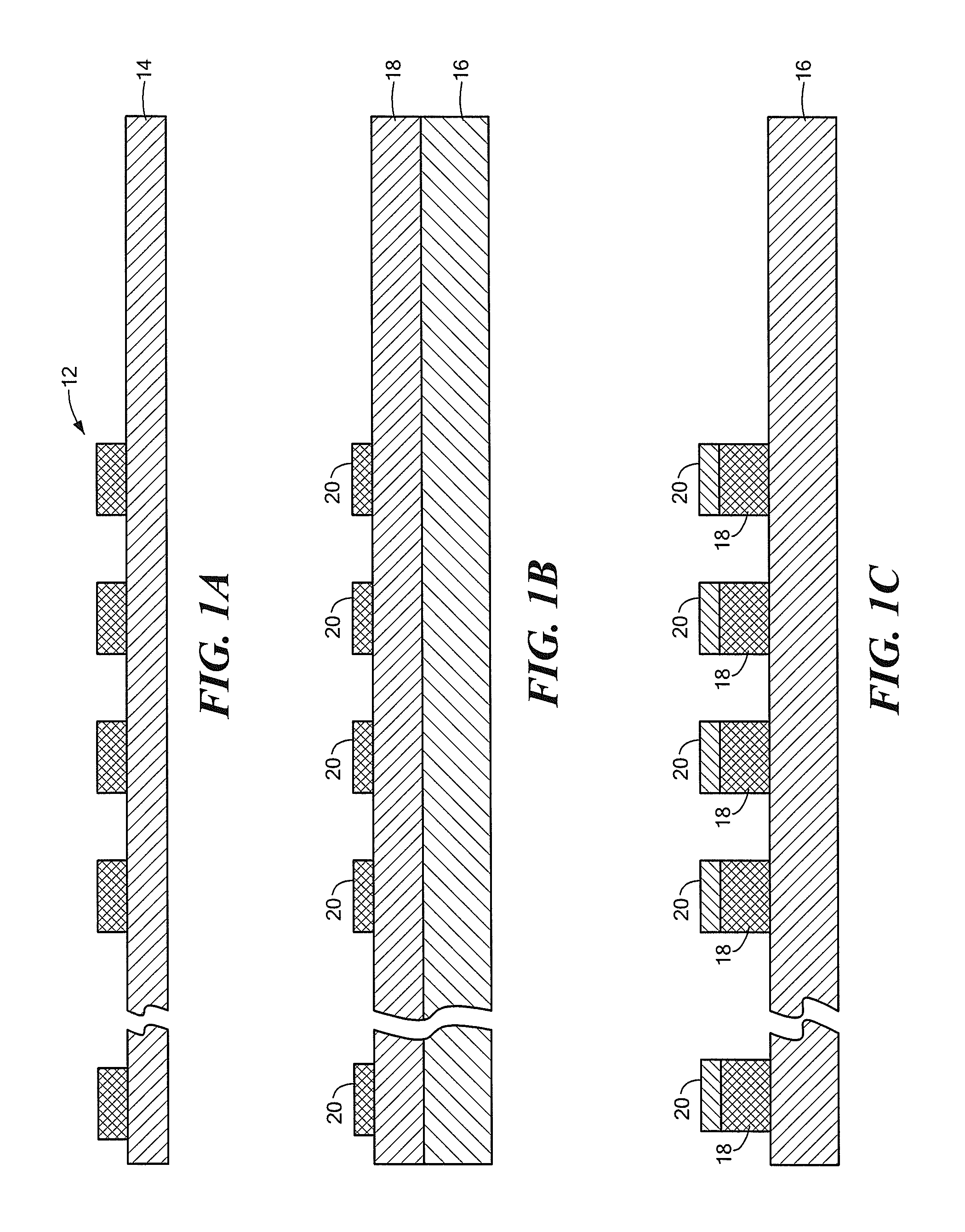Method for processing semiconductors using a combination of electron beam and optical lithography
a technology of electron beam and optical lithography, applied in the field of semiconductor processing, can solve the problems of multiple layers, poor optical alignment quality, and early use of metal layers, and achieve the effect of good optical alignment signal and superior alignment signal quality
- Summary
- Abstract
- Description
- Claims
- Application Information
AI Technical Summary
Benefits of technology
Problems solved by technology
Method used
Image
Examples
Embodiment Construction
[0032]Referring now to FIGS. 1A through 1P, a process for foaming a semiconductor device, here a Field Effect Transistor (FET) 10 (FIG. 1P) is shown. First, an alignment mark pattern 12 is formed on an optical lithographic reticle 14 (FIG. 1A). The pattern 12 has two portions: an electron beam alignment pattern portion 12a and an optical alignment pattern portion 12b. A semiconductor substrate 16, here GaN, having a layer 18 of metal deposited on the upper surface of the substrate 16 (i.e., the zero layer of the process) is coated with a layer of photoresist material 20 (FIG. 1B). The metal material in layer 18 is a refractory metal or a refractory metal compound, here for example TaN having a thickness of 500 Angstroms. Other materials may be used for metal layer 18, for example, Hafnium, Tantalum, Tungsten, Rhenium, or compounds thereof such as when combined with nitrogen, or metals having an atomic weight greater than 60.
[0033]Next, the alignment mark pattern 12 on the reticle 14...
PUM
 Login to View More
Login to View More Abstract
Description
Claims
Application Information
 Login to View More
Login to View More - R&D
- Intellectual Property
- Life Sciences
- Materials
- Tech Scout
- Unparalleled Data Quality
- Higher Quality Content
- 60% Fewer Hallucinations
Browse by: Latest US Patents, China's latest patents, Technical Efficacy Thesaurus, Application Domain, Technology Topic, Popular Technical Reports.
© 2025 PatSnap. All rights reserved.Legal|Privacy policy|Modern Slavery Act Transparency Statement|Sitemap|About US| Contact US: help@patsnap.com



